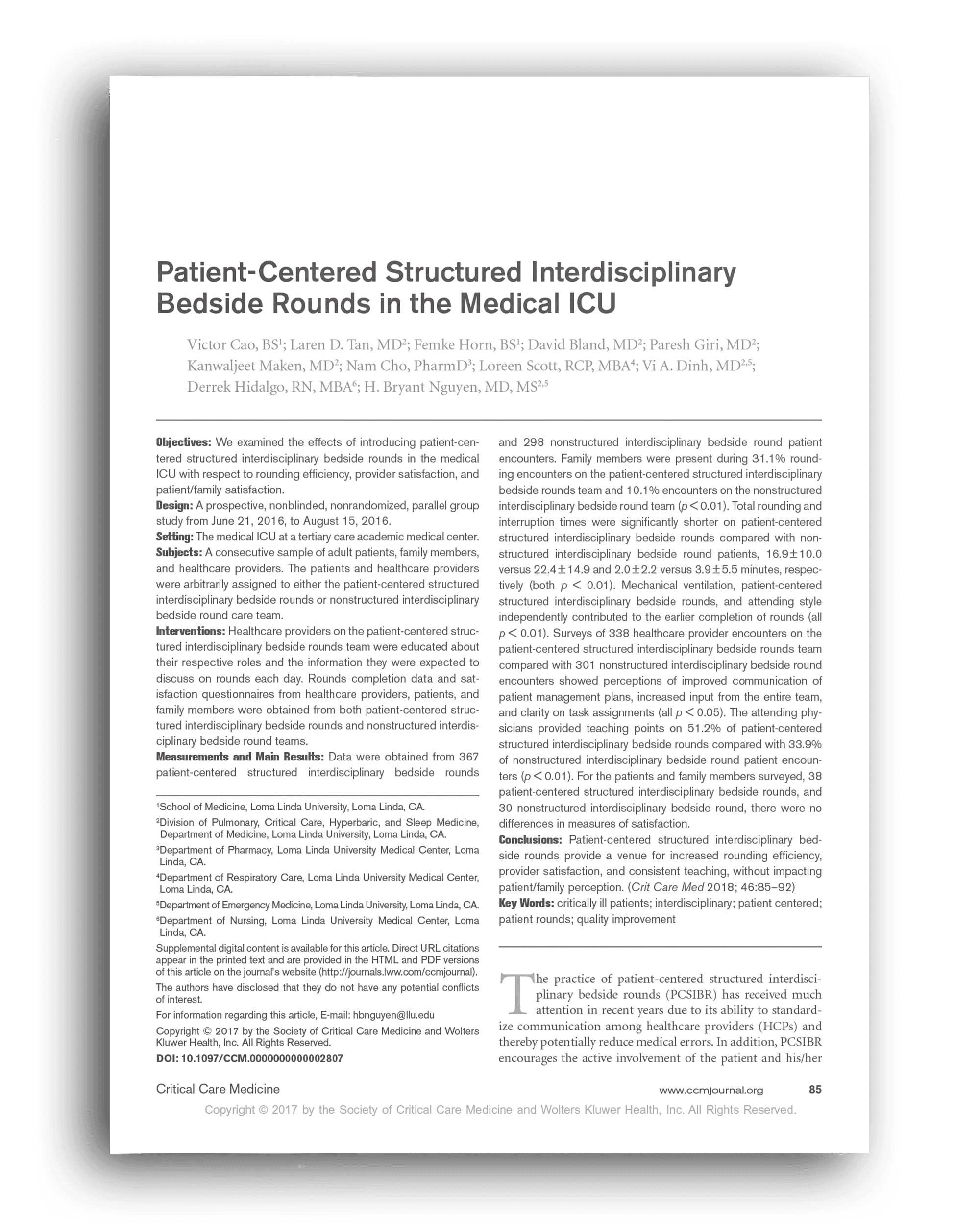
Patient-Centered SIBR in the Medical ICU

Top Results
Overview
In a study conducted at Loma Linda University Medical Center, the implementation of patient-centered structured interdisciplinary bedside rounds (PCSIBR) in the medical ICU led to increased rounding efficiency, provider satisfaction, and teaching consistency without negatively impacting patient or family perception.
Objectives
To examine the effects of introducing patient-centered structured interdisciplinary bedside rounds (PCSIBR) in the medical ICU on rounding efficiency, provider satisfaction, and patient/family satisfaction.
Methods
The study was a prospective, nonblinded, nonrandomized, parallel group design conducted over an 8-week period from June 21, 2016, to August 15, 2016. It involved 665 patient encounters divided into PCSIBR (367) and non-SIBR (298) groups. Surveys were administered to healthcare providers (HCPs), patients, and family members to assess satisfaction and perceptions.
Results
Rounding Efficiency
Total rounding time per patient was significantly shorter with PCSIBR (16.9 ± 10.0 minutes) compared to non-SIBR (22.4 ± 14.9 minutes, p<0.01).
Interruption time was reduced with PCSIBR (2.0 ± 2.2 minutes) compared to non-SIBR (3.9 ± 5.5 minutes, p<0.01).
25% pt increase in team rounds with the Attending summarizing the plan
Provider Satisfaction:
Increased perceptions of improved communication, team input, and task clarity with PCSIBR.
Attending physicians provided teaching points more frequently during PCSIBR (51.2%) compared to non-SIBR (33.9%, p<0.01).
Patient and Family Satisfaction:
No significant differences in satisfaction measures between PCSIBR and non-SIBR groups.
Family presence during rounds was higher with PCSIBR (31.1%) compared to non-SIBR (10.1%, p<0.01).
Conclusion
Patient-centered structured interdisciplinary bedside rounds (PCSIBR) enhance rounding efficiency and provider satisfaction in the medical ICU without negatively impacting patient or family perceptions. This structured approach to bedside rounds improves communication, teaching, and team collaboration.




